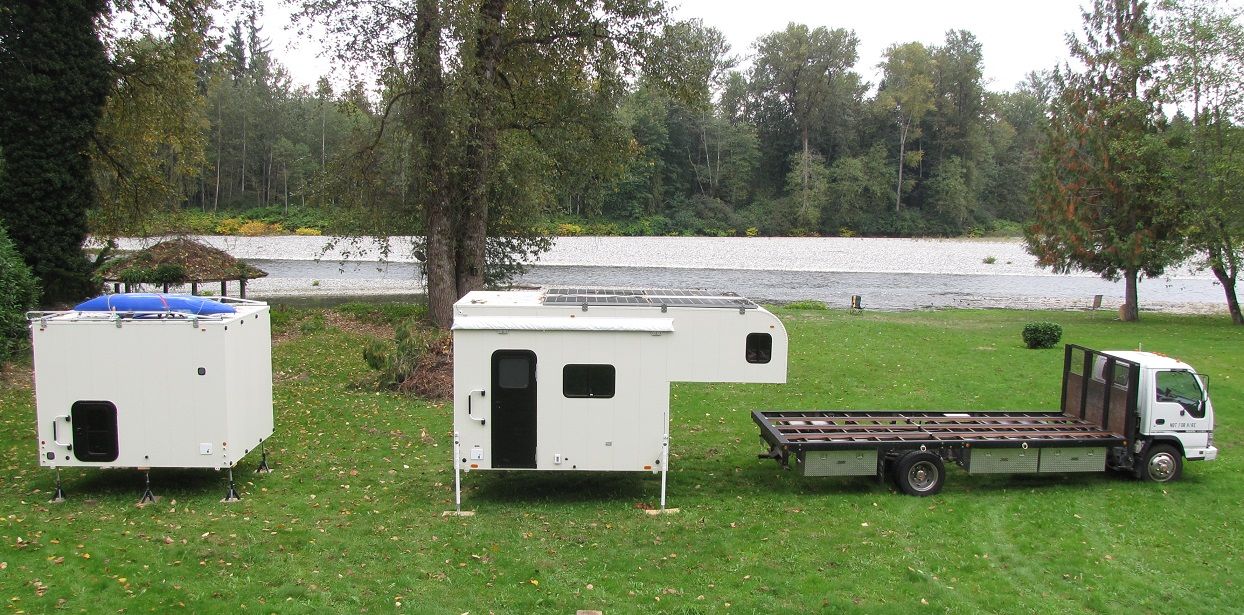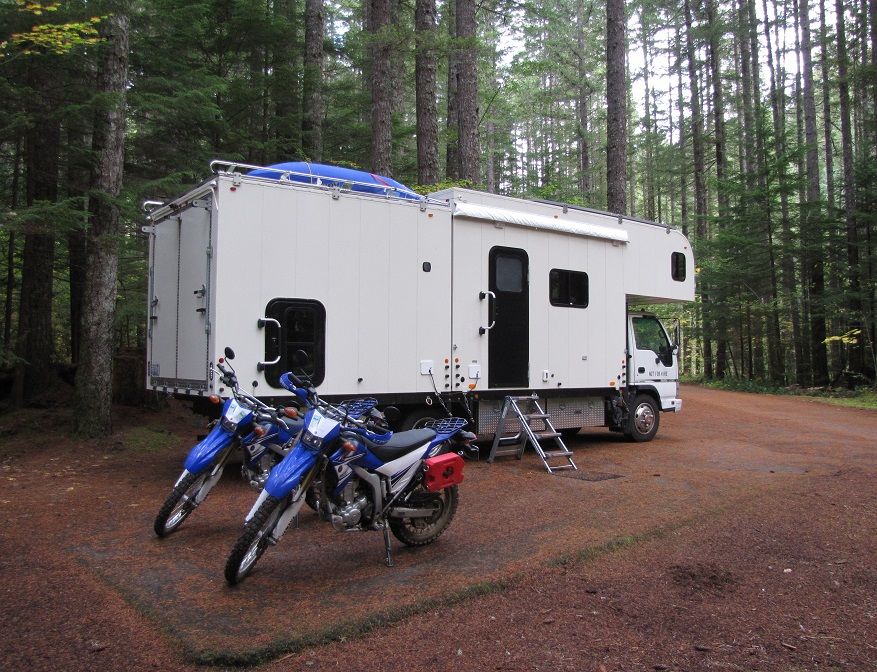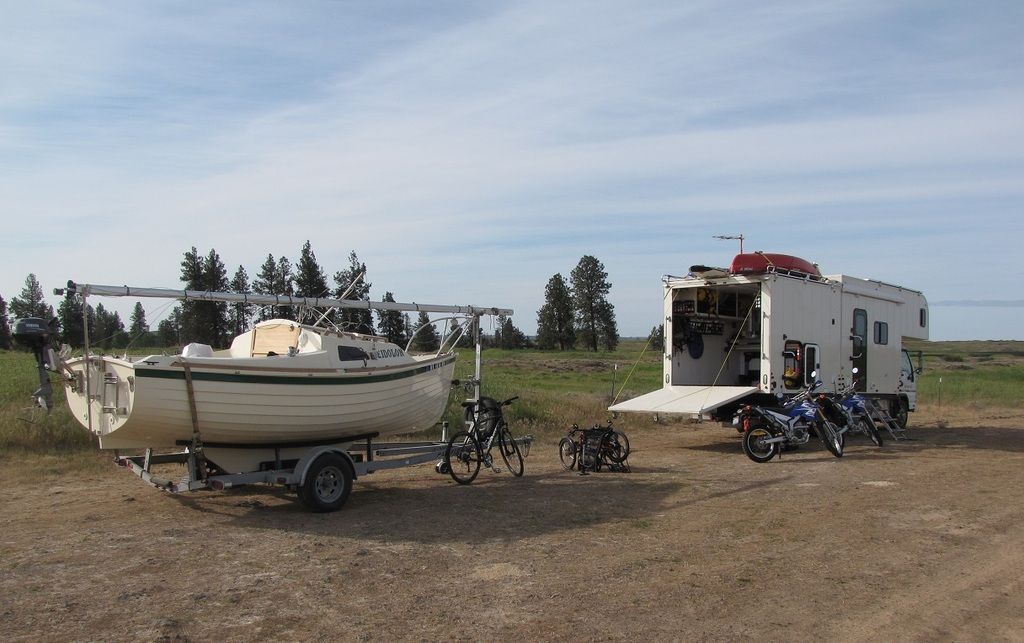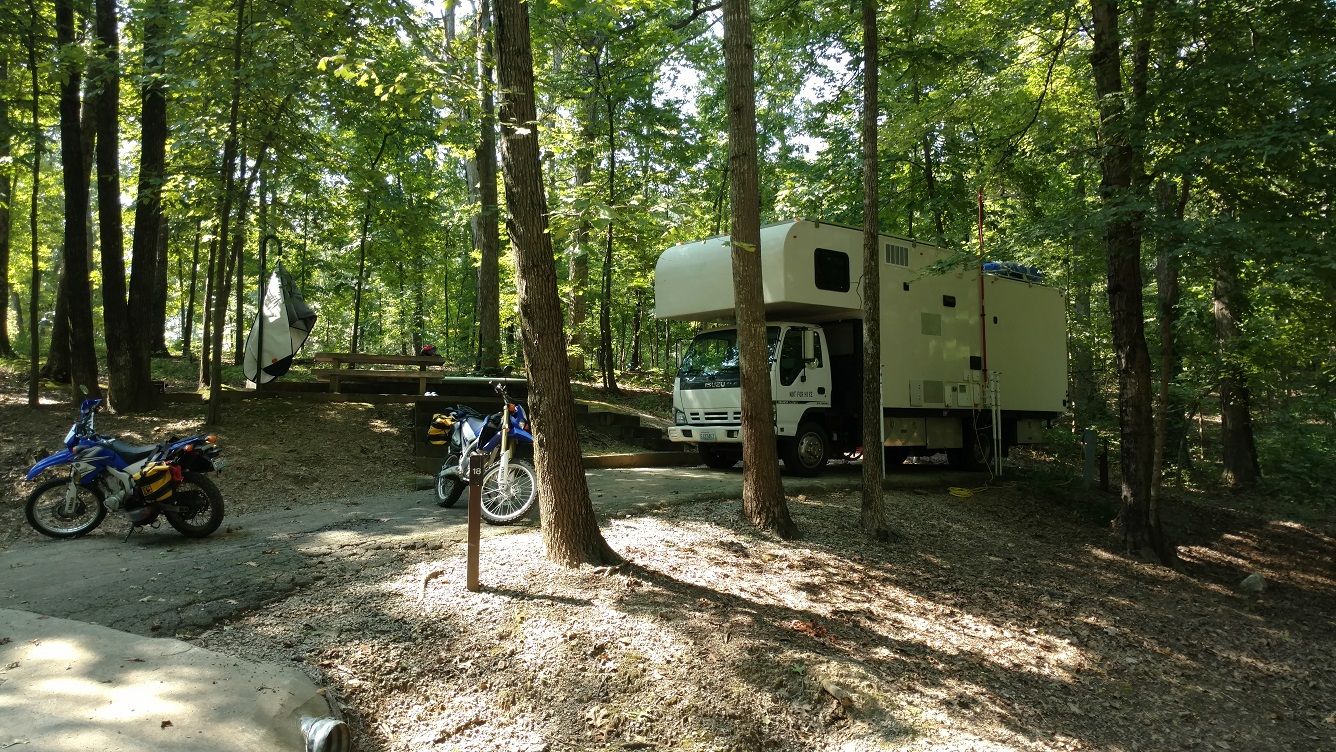Jfet
Feb 22, 2017Explorer
Driving our homebuilt rig to Alaska....questions
Hey,
Some of you might know our homebuilt RV (truck camper, toyhauler, class C...it really doesn't fit a category). For those who don't, we built a living pod and a garage/workshop pod that both go on a 2006 Isuzu NRR 4cyl diesel 20 foot flatbed truck with 19.5 Toyo M608Z tires. The garage pod holds our motorcycles and has tools + workbench while the living pod is where we sleep. Both pods are removable with jacks we carry in the underboxes but it takes an hour or two. We have completed a 11,000 mile trip of the lower 48 from Washington state to Florida pulling our 17 foot sailboat with no problems although the rig is slow up the mountains. We are thinking of leaving the sailboat for the trip to Alaska and perhaps leaving the 400 pound cnc milling machine and canoe/kayak to lighten up the garage pod.
So, the questions:
1) The truck is 2wd and we do have brand new dually chains but I have never driven the truck in snow. Is it likely we will not encounter much real snow if we leave mid April and take about a month to get to Anchorage?
2) I go slow already, around 52mph during the 11,000 mile trip of the lower 48, which nets me about 10mpg pulling the sailboat. If I want to go even slower through most of the Al-Can, is it relatively easy to let people pass? Turnouts or just not that heavy of traffic?
3) At 10mpg I have a max range of about 300 miles with the 31 gallon tank. I was thinking of taking at least 10 gallons more diesel. Is that silly or not enough?
4) We don't carry a spare 19.5 tire for space and weight reasons, plus we don't have a jack that can lift the truck itself or a breaker bar to turn the lugs. Should I think hard about carrying a spare? In the lower 48 my plan was to just call a truck service but we have not had an issue to date with the new, heavy tread tires (which now have about 12,000 miles on them). A spare plus jack plus breaker bar is probably going to be 150 pounds, which subtracts from our cargo, but we are dropping the cnc milling machine and not having the tongue weight of the sailboat so it is possible.
Thanks and here are a few of pics of our rig:





Some of you might know our homebuilt RV (truck camper, toyhauler, class C...it really doesn't fit a category). For those who don't, we built a living pod and a garage/workshop pod that both go on a 2006 Isuzu NRR 4cyl diesel 20 foot flatbed truck with 19.5 Toyo M608Z tires. The garage pod holds our motorcycles and has tools + workbench while the living pod is where we sleep. Both pods are removable with jacks we carry in the underboxes but it takes an hour or two. We have completed a 11,000 mile trip of the lower 48 from Washington state to Florida pulling our 17 foot sailboat with no problems although the rig is slow up the mountains. We are thinking of leaving the sailboat for the trip to Alaska and perhaps leaving the 400 pound cnc milling machine and canoe/kayak to lighten up the garage pod.
So, the questions:
1) The truck is 2wd and we do have brand new dually chains but I have never driven the truck in snow. Is it likely we will not encounter much real snow if we leave mid April and take about a month to get to Anchorage?
2) I go slow already, around 52mph during the 11,000 mile trip of the lower 48, which nets me about 10mpg pulling the sailboat. If I want to go even slower through most of the Al-Can, is it relatively easy to let people pass? Turnouts or just not that heavy of traffic?
3) At 10mpg I have a max range of about 300 miles with the 31 gallon tank. I was thinking of taking at least 10 gallons more diesel. Is that silly or not enough?
4) We don't carry a spare 19.5 tire for space and weight reasons, plus we don't have a jack that can lift the truck itself or a breaker bar to turn the lugs. Should I think hard about carrying a spare? In the lower 48 my plan was to just call a truck service but we have not had an issue to date with the new, heavy tread tires (which now have about 12,000 miles on them). A spare plus jack plus breaker bar is probably going to be 150 pounds, which subtracts from our cargo, but we are dropping the cnc milling machine and not having the tongue weight of the sailboat so it is possible.
Thanks and here are a few of pics of our rig:





